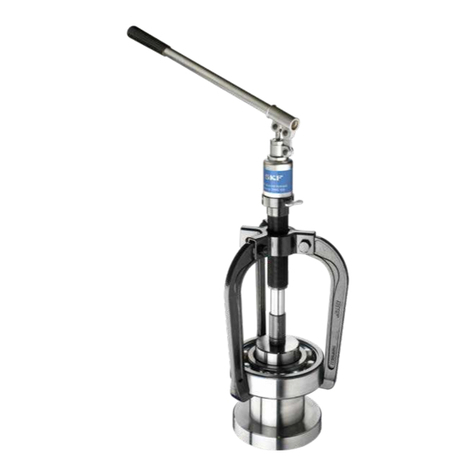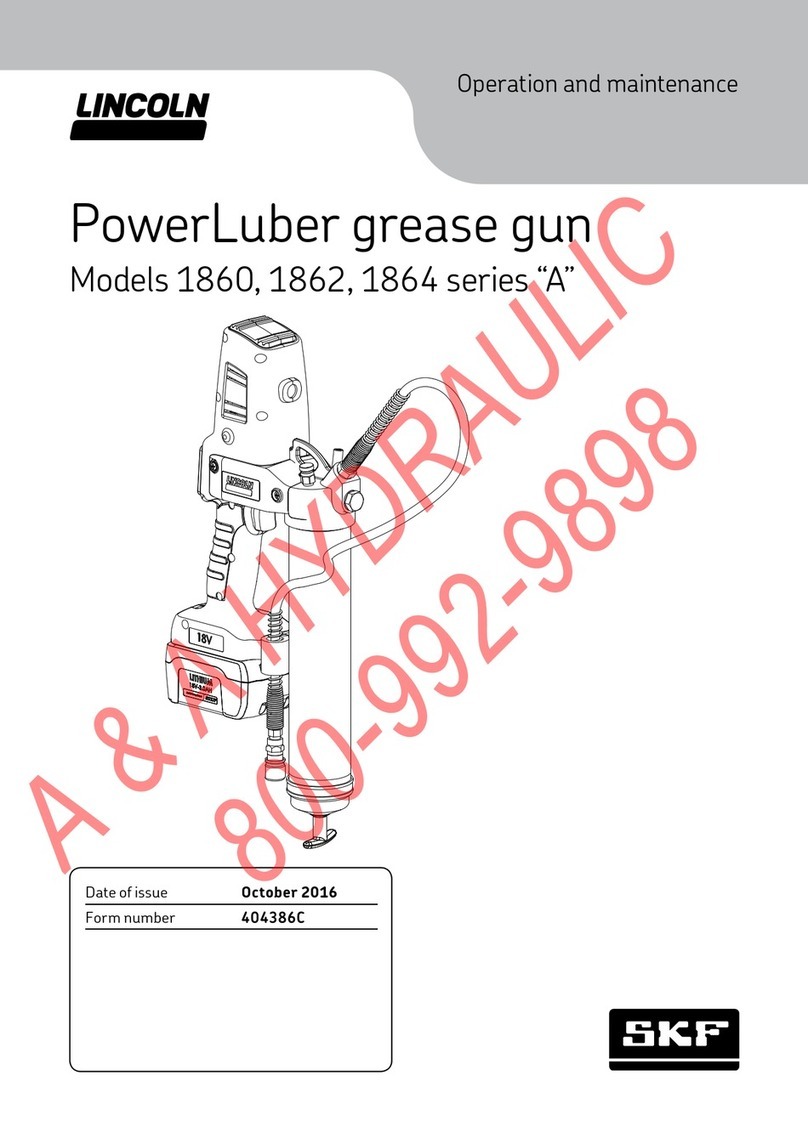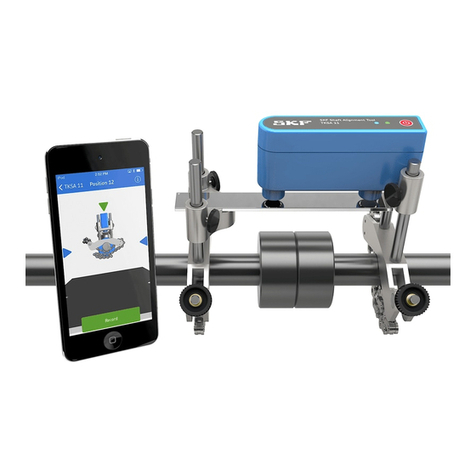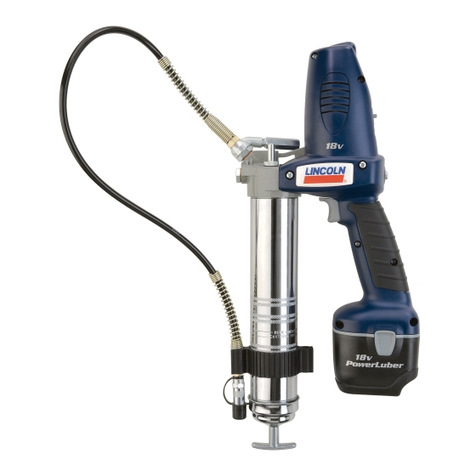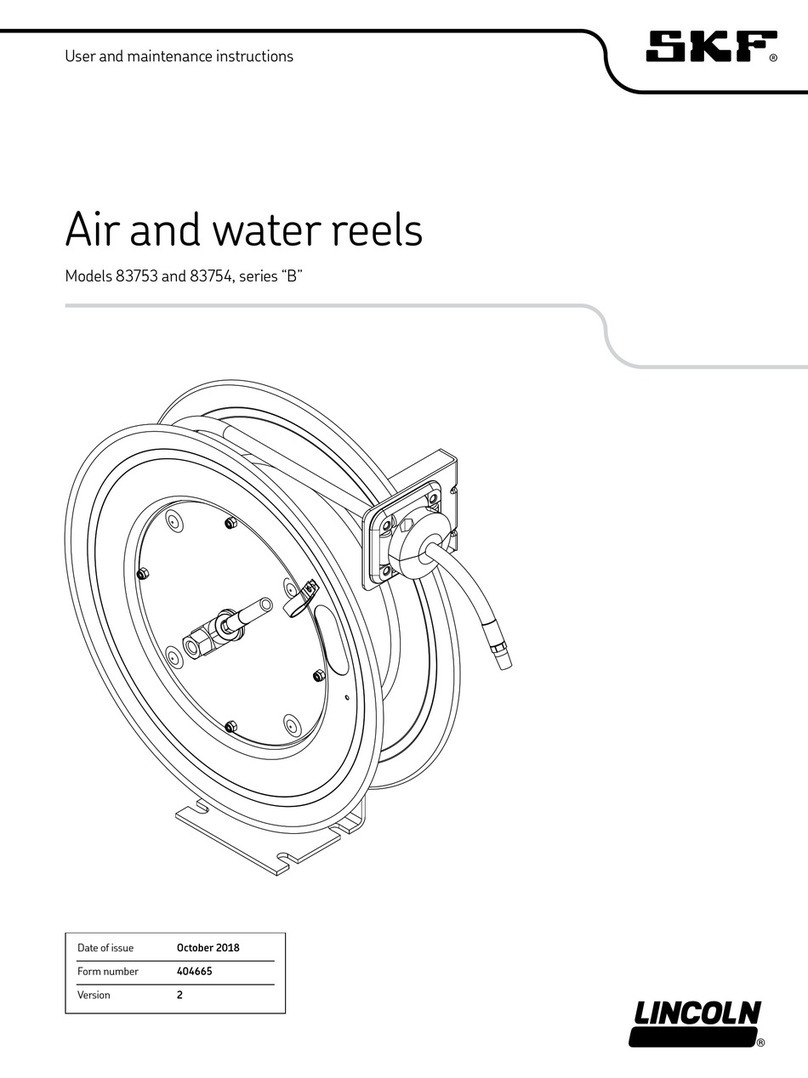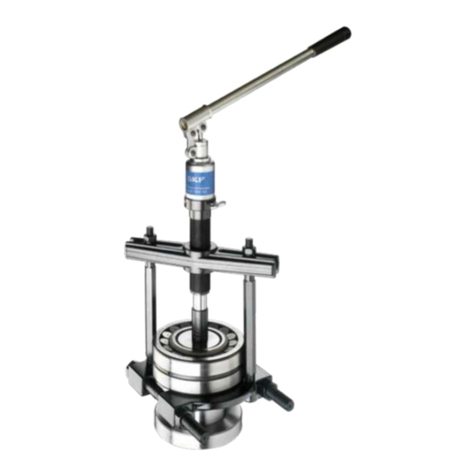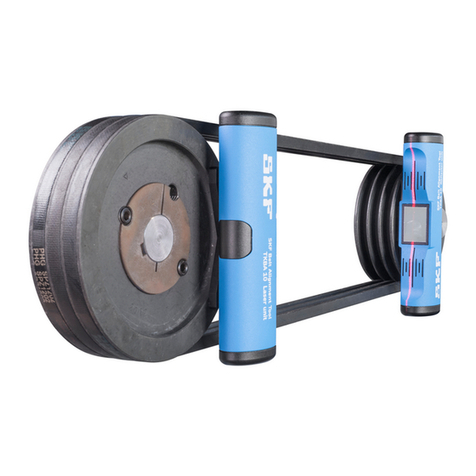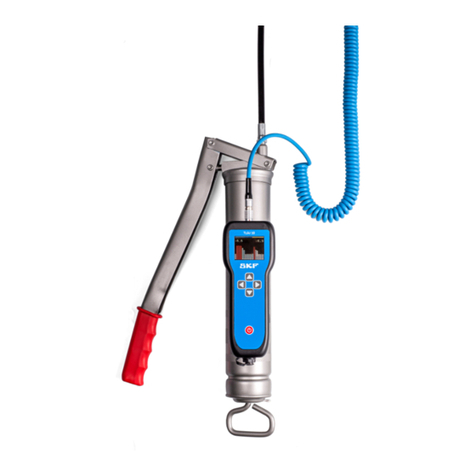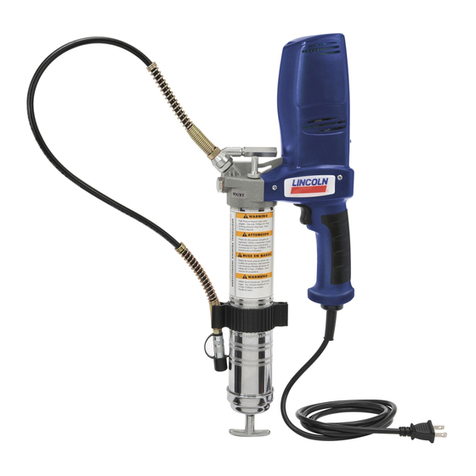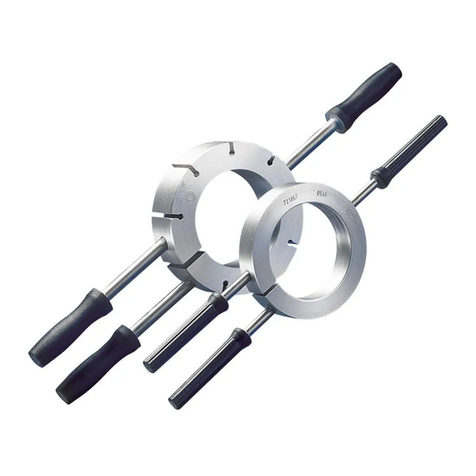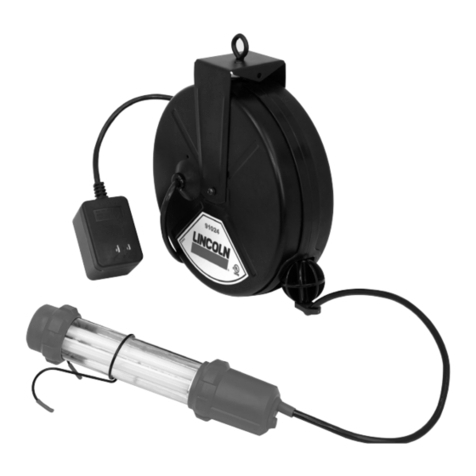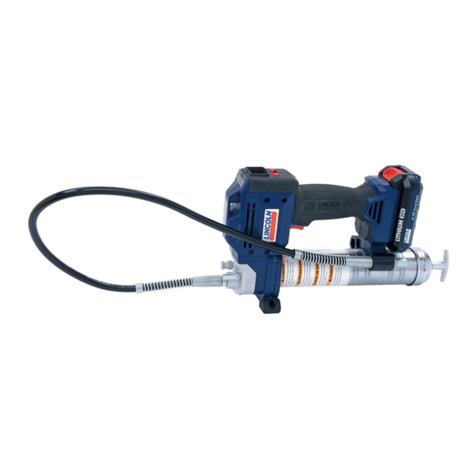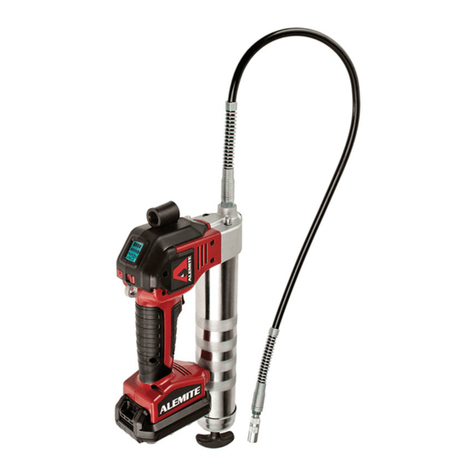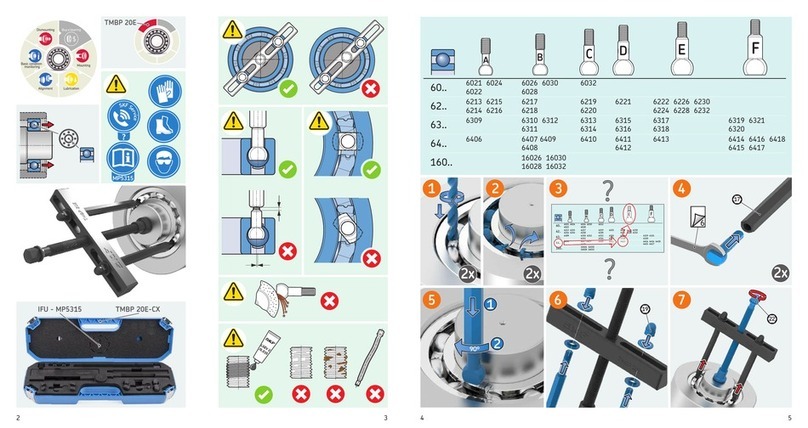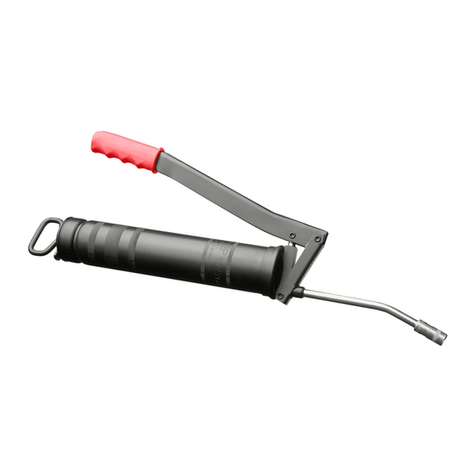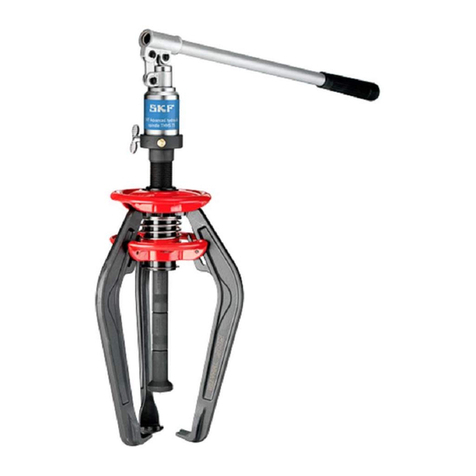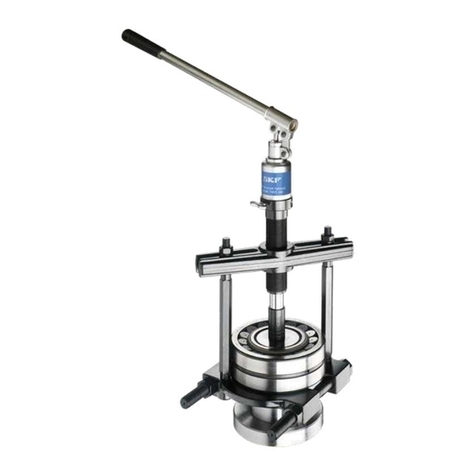
Original instruction
Power tool use and care
•Do not force the power tool. Use the
correct power tool for your application.
The correct power tool will do the job bet-
ter and safer at the rate for which it was
designed.
•Do not use the power tool if the switch
does not turn it on and off. Any power
tool that cannot be controlled with the
switch is dangerous and must be repaired.
•Disconnect the plug from the power
source and/or the battery pack from the
power tool before making any adjust-
ments, changing accessories, or storing
power tools. Such preventive safety
measures reduce the risk of starting the
power tool accidentally
•Store idle power tools out of the reach
of children and do not allow persons
unfamiliar with the power tool or these
instructions to operate the power tool.
Power tool is dangerous in the hands of
untrained users.
•Maintain power tools. Check for
misalignment or binding of moving
parts, breakage of parts and any other
condition that may affect the power
tool’s operation. If damaged, have the
power tool repaired before use. Many
accidents are caused by poorly maintained
power tools.
•Keep cutting tools sharp and clean.
Properly maintained cutting tools with
sharp cutting edges are less likely to bind
and are easier to control.
•Use the power tool, accessories and tool
bits etc. in accordance with these
instructions, taking into account the
working conditions and the work to be
performed. Use of the power tool for
operations different from those intended
could result in a hazardous situation.
Battery tool use and care
•Recharge only with the battery charger
specified by the manufacturer. A charger
that is suitable for one type of battery pack
may create a risk of fire when used with
another battery pack.
•Use power tools only with specifically
designated battery packs. Use of any
other battery packs may create risk of
injury and fire.
•When battery pack is not in use, keep it
away from other metal objects, like
paper clips, coins, keys, nails, screws or
other small metal objects, that can
make a connection from one terminal
to another. Shorting the battery terminals
together may cause burns or a fire.
•Under abusive conditions, liquid may be
ejected from the battery; avoid contact.
Liquid ejected from battery may cause
irritation or burns. If contact acciden-
tally occurs, flush with water. If liquid
contacts eyes, seek medical help. Liquid
ejected from the battery may cause irrita-
tion or burns.
Service
Have your power tool serviced by a quali-
fied repair person using only identical
replacement parts. This will ensure that
the safety of the power tool is maintained.
Safety of others
This appliance is not intended for use by
persons (including children) with reduced
physical, sensory or mental capabilities, or
lack of experience and knowledge, unless
they have been given supervision or instruc-
tion concerning use of the appliance by a
person responsible for their safety.
Children should be supervised to ensure
that they do not play with the appliance.
Specific safety
•Always wear eye protection. The PowerLu-
ber can generate up to bar
(10,000 psi). Use only Lincoln , ,
or outlet whip hoses. Grease
injection injuries are a very serious injury.
Hold the hose only in the area of the
spring guard. Avoid accidental starting. Be
sure switch is not depressed when insert-
ing battery pack. Replace the hose at the
first sign of wear, kink or damage to the
outside jacket.
• Do not bend the hose so that it becomes
kinked.
• Do not overreach. Keep proper footing and
balance at all times. Proper footing and
balance enable better control of the tool in
unexpected situations.
• Use safety equipment. Always wear eye
protection.
• Dust mask, non-skid safety shoes, hard
hat or hearing protection must be used for
appropriate conditions.
• The gun uses lubricants, that may be
flammable and poisonous if ingested.
Do not use gun near open flame or other
fire hazards.
• Greases are often marketed as high
temperature because it must maintain
their lubricating properties in hot areas,
but the lubricants may be flammable if the
temperature is too high. Please read all
warnings on lubricants before using this
gun. Do not use flammable greases with
this grease gun.
Original instruction
